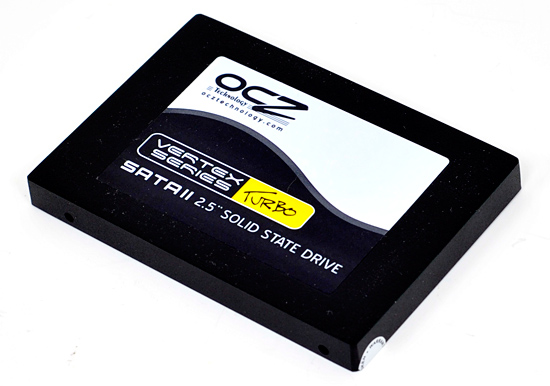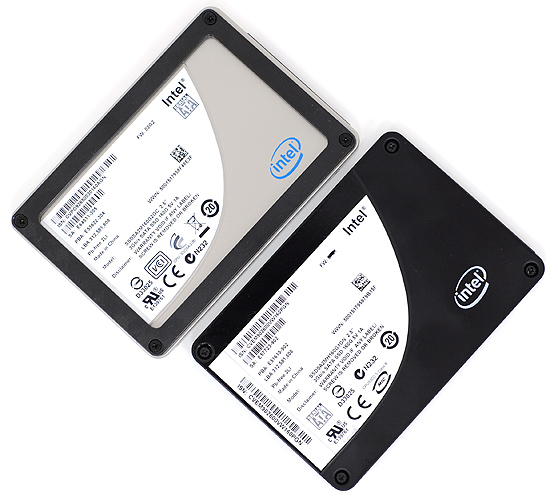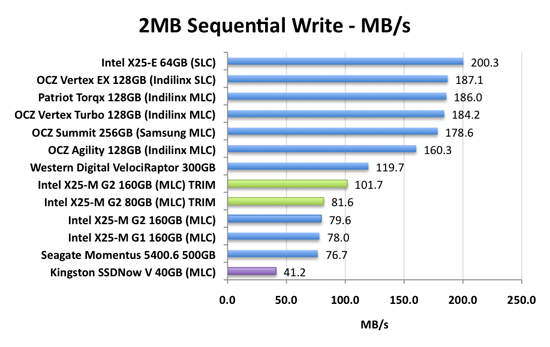The SSD Improv: Intel & Indilinx get TRIM, Kingston Brings Intel Down to $115
by Anand Lal Shimpi on November 17, 2009 7:00 PM EST- Posted in
- Storage
Update 2: Intel has given us an updated timeframe on a fixed version of its TRIM firmware. Intel will release the new firmware by the end of November 2009. More info here.
Update: Some users have had issues with Intel's TRIM firmware bricking their drives, Intel has since pulled the firmware while they figure out what's going on. If you've downloaded it but haven't updated, do so at your own risk. While we haven't had any issues on the three drives we've updated here others have had problems. We'll keep you posted. Intel's official statement is below:
“Yes, we have been contacted by users with issues with the firmware upgrade and are investigating. We take all sightings and issues seriously and are working toward resolution. We have temporarily taken down the firmware link while we investigate.”
Welcome to the anti-climax. After a year of talking about it, Windows 7 and TRIM are here. How does it feel to be a TRIMionaire?

Indilinx, as usual, was first. After a couple of false starts, the two tier 1 Indilinx partners (SuperTalent and OCZ) enabled TRIM on their Barefoot SSDs (OCZ Vertex, SuperTalent UltraDrive). OCZ calls its TRIM firmware 1.40 while SuperTalent calls it 1819. Update:As many of you have correctly pointed out, Crucial also has an 1819 update available for its SSDs. You can get the firmware for your drive from the links here:
| TRIM Firmware Download | |
| Crucial | M225 1819 |
| SuperTalent | UltraDrive GX 1819 |
| OCZ | Vertex /Agility 1.40 |
Intel held off to align with the release of Windows 7. Last week Windows 7 officially went on sale, and today Intel is delivering on its promise: this bootable iso will enable TRIM on X25-M G2 drives.

Only the X25-M G2 gets TRIM, the G1 (right) is left in the dust. The G1 is more resilient than the G2 when it comes to performance degradation over time since it doesn't have TRIM.
Alongside TRIM there’s one more surprise. If you own a 160GB X25-M G2, Intel boosted sequential write speeds from 80MB/s to 100MB/s:

The 80GB drives remain unchanged unfortunately. Intel still won’t tell us why write speeds are so low to begin with.
What TRIM Does
Before we get much further, and without diving into a complete rehash of how SSDs work (which I’ve done here, here and here again), I want to do a quick refresher on TRIM.
SSDs are made up of millions of NAND flash cells. They can be written to in groups called pages (generally 4KB in size) but can only be erased in larger groups called blocks (generally 128 pages or 512KB). These stipulations are partially the source of many SSD performance issues.
The whole ordeal gets more complicated when you realize that an SSD has no way of knowing when a file is deleted. Until an address gets used again, the SSD has to keep track of every last bit of data that’s written to it. The ATA-TRIM instruction tilts the balance in favor of the SSD.
In a supported OS (e.g. Windows 7), whenever you permanently delete a file or format your drive, the addresses that are erased are sent along with the TRIM command to the SSD’s controller. The TRIM instruction tells the SSD that those locations don’t contain valid data and that it no longer has to track them.

Simplified version of how a SSD controller works. TRIM helps the SSD clean blocks and add them to the free block pool
Again, I won’t go into great detail here but TRIM addresses a major part of the performance degradation over time issue that plague all SSDs. A TRIM enabled drive running an OS with TRIM support will stay closer to its peak performance over time.










162 Comments
View All Comments
slickdoody - Monday, October 26, 2009 - link
Did Intel remove the SSD toolbox software?The link in the article doesn't work and I can't find the software on the site by searching.
Griswold - Monday, October 26, 2009 - link
Here it is again:http://downloadcenter.intel.com/Detail_Desc.aspx?a...">http://downloadcenter.intel.com/Detail_Desc.aspx?a...
slickdoody - Monday, October 26, 2009 - link
thanks!Sunburn74 - Monday, October 26, 2009 - link
Its absolutely ridiculous how intel is screwing those customers who bought their x25m g1s by specifically going out of their way to prevent trim support. At least give a manual wiper tool, you jerks. Geez!lorax1284 - Tuesday, December 15, 2009 - link
I know that Toms Hardware has commented on the fact that Intel is not providing a firmware update for the X25-m first generation drives... but I think TH is in a position to rake Intel over the coals for this terrible decision! Toms Hardware caters to computer enthusiasts, exactly the type of customers who buy first generation hardware like the X25-m G1... so for Intel to NOT issue a TRIM firmware update for X25-m G1 drives should ahve Toms Hardware users up in arms, and certainly questioning whether Intel's support for the G2 drives will stand the test of time!If you think Intel is wrong to abandon the G1 drives by not providing a TRIM firmware update, please consider signing this petition!
http://www.ipetitions.com/petition/intel-x25-m-g1-...">http://www.ipetitions.com/petition/intel-x25-m-g1-...
cbutters - Monday, November 23, 2009 - link
Agreed 100%, I purchased an x-25m G1 at a premium thinking that intel would take care of me once TRIM support was available. Since I heard that intel wouldn't be giving any G1's trim for no reason other than to screw over the consumer into buying an updated drive, I have only purchased Indilinx based SSDs (over 4 now) and I recommend that everyone else do the same!They also promised that the 80gb G2 SSDs would be sold at a price point of $229, but due to the demand they are gouging everyone selling them at price points of 299 and above. (can't blame them, it's economics, but don't PROMISE it at $229 and not fulfill it.)
People buy stuff where the performance is, but I won't buy an intel SSD again unless they release something that performs significantly better than the competitor, but the point is that you should buy indilinx based drives because they are just as good and you won't be supporting Intel's poor decision with regard to the G1 customers.
winterlord - Wednesday, November 18, 2009 - link
great SSD articles you guys have been putting out latly. but it would be great to see a corsair SSD in these benchies. alot of people talk about them and they seem blazing fast even faster then the intels from what iv read around on google but id like to see one of my populer tech websiteas to confirm this. i like this article here but any chance you can throw a corsiar in the lineup :)they have trim right?
chrnochime - Monday, October 26, 2009 - link
You pay the price for being early adapter. I mean even now with the G2 a colleague of mine just bought back in August, the thing still had to be RMA'd.I'd never use something like this for work related use unless it's been tested by many guinea... err I mean other consumers before it's proven to be cheap and reliable.
Griswold - Thursday, November 19, 2009 - link
We got another ADAPTER here! What do you adapt with, if I may ask?WillBach - Monday, October 26, 2009 - link
If you don't have the software to image and restore your drive, get it now! It's an order of magnitude less expensive* than the SSD, and it's the fastest, cleanest, and most reliable way to recover from a failed hard drive.*If you run OS X, you can use Time Machine or Disk Utility. If you run Linux or BSD, you can use dd from the terminal.